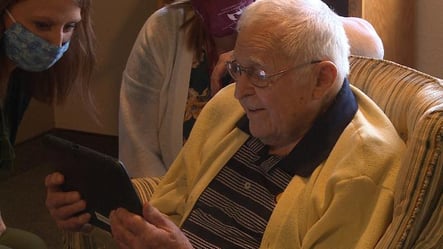Clinicians, including physicians, nurses, social workers, physical therapists, and many others, are essential contributors to a patient’s health and care plan. They are the individuals who leverage their knowledge to make the appropriate clinical decisions to improve their patients’ health outcomes. While the clinician's care is vital, in many cases the patient also requires a caregiver to help them meet their daily needs and ensure they remain supported, safe, and on track with their care plan.
The Role of the Caregiver
The caregiver may be an individual from a professional organization that has had training and education in providing care. This “formal” caregiver is paid for the services they provide. In other instances, the caregiver may be an “informal” caregiver, an individual from within the patient’s social cohort that they have a close relationship with, such as a friend or family member. Nonetheless, caregivers are tasked with helping the patient throughout the day and often night. Caregivers perform many tasks including transportation, grocery shopping, housework, preparing meals, as well as assisting with getting dressed, out of bed, eating, bathing, incontinence, or even providing company and emotional support.
No matter the task at hand, the caregiver’s main concern is making sure the patient is comfortable, safe, and following their care plan as directed by their clinician. On top of caring for the patient, the caregiver must take care of their own physical and mental health. Though the work of being a caregiver is often rewarding, the work can become stressful and overwhelming, especially when the caregiver cannot always be at the patient’s side (“Caregivers”, 2020). It is essential that caregivers have the tools they need to provide support to the patient, but also to ensure they avoid the caregiver burden.
An Introduction to CaregiverConnect
HRS’ telehealth platform incorporates the caregiver into the patient’s care plan. CaregiverConnect, available on iOS and Android, incorporates the patient’s caregiver(s), and other loved ones, into the telehealth program, providing a holistic approach to managed care. The free mobile application provides the caregiver valuable insight into the patient’s care plan. With CaregiverConnect, the caregiver can help monitor and track the patient’s daily progress as seen through their vital signs, symptom survey responses and clinical team communication through video, voice, and text messaging. Caregivers can communicate with the patient within the application itself, and patients’ can reach their caregiver directly through their device (tablet or mobile). This functionality allows for caregivers to interact with their loved ones wherever they go and check on their daily progress. CaregiverConnect takes the burden off the unknown away from the caregiver, as the application is the hub for the patient’s care. For example, if the caregiver has gone to run errands and needs to make sure the patient has taken a medication or recorded their blood pressure, they can open the application and see if the patient has completed the necessary actions.
CaregiverConnect Through the COVID-19 Pandemic

We have heard many stories from our partners on how they have used the CaregiverConnect application to bring patients closer to their loved ones. Frances at Moments Hospice, uses his tablet to video chat with his daughter through the Caregiver functionality. With the limitations that COVID-19 has brought to patients across the world, connecting with family members and other loved ones has become increasingly difficult. Healthcare organizations across the country have closed their doors to outside visitors to ensure the health and safety of their patients and staff is protected. People of all ages have found themselves unable to visit loved ones who live in care facilities or who live at home with complex medical conditions. Patient isolation and loneliness has been an overwhelming concern. Telehealth facilitates continuous communication between the caregiver, patient, and clinician allowing for connection to remain and helping combat loneliness and isolation while also promoting peace of mind amongst the patient, provider, and caregiver.
References:
I. Caregivers. (2020, May 28). Retrieved from https://medlineplus.gov/caregivers.html